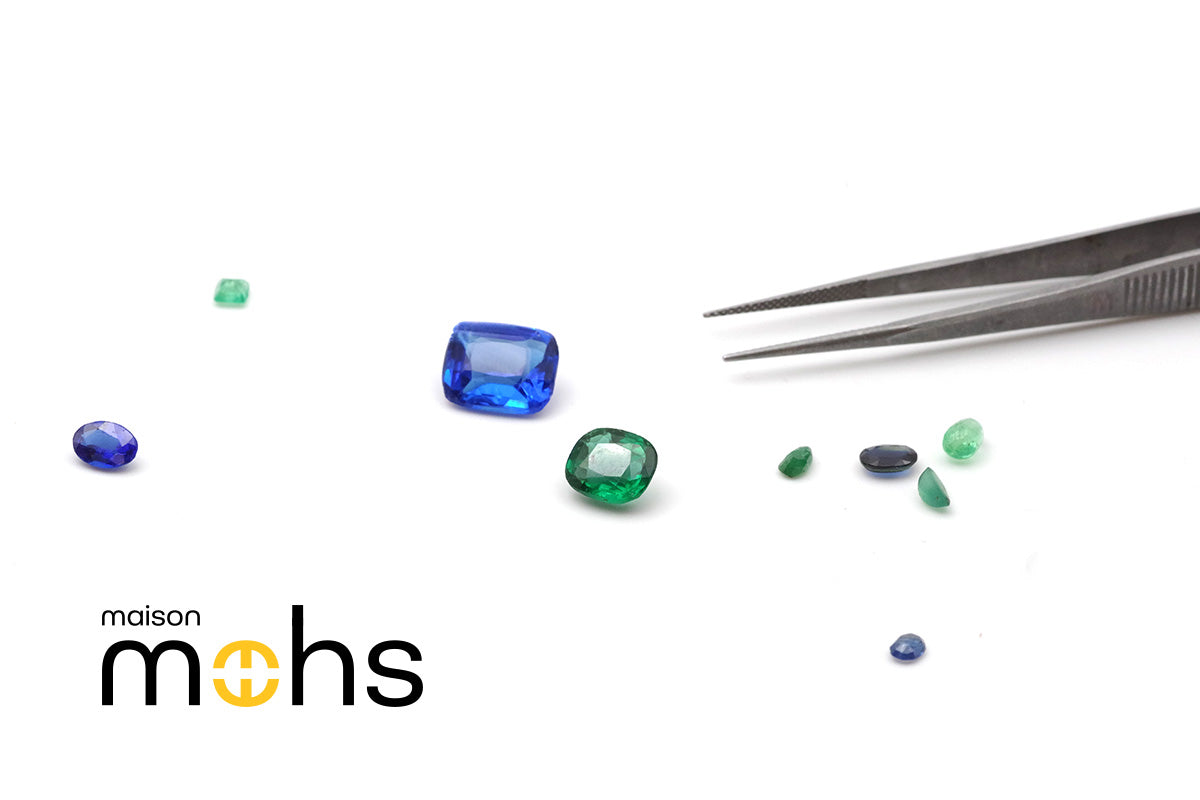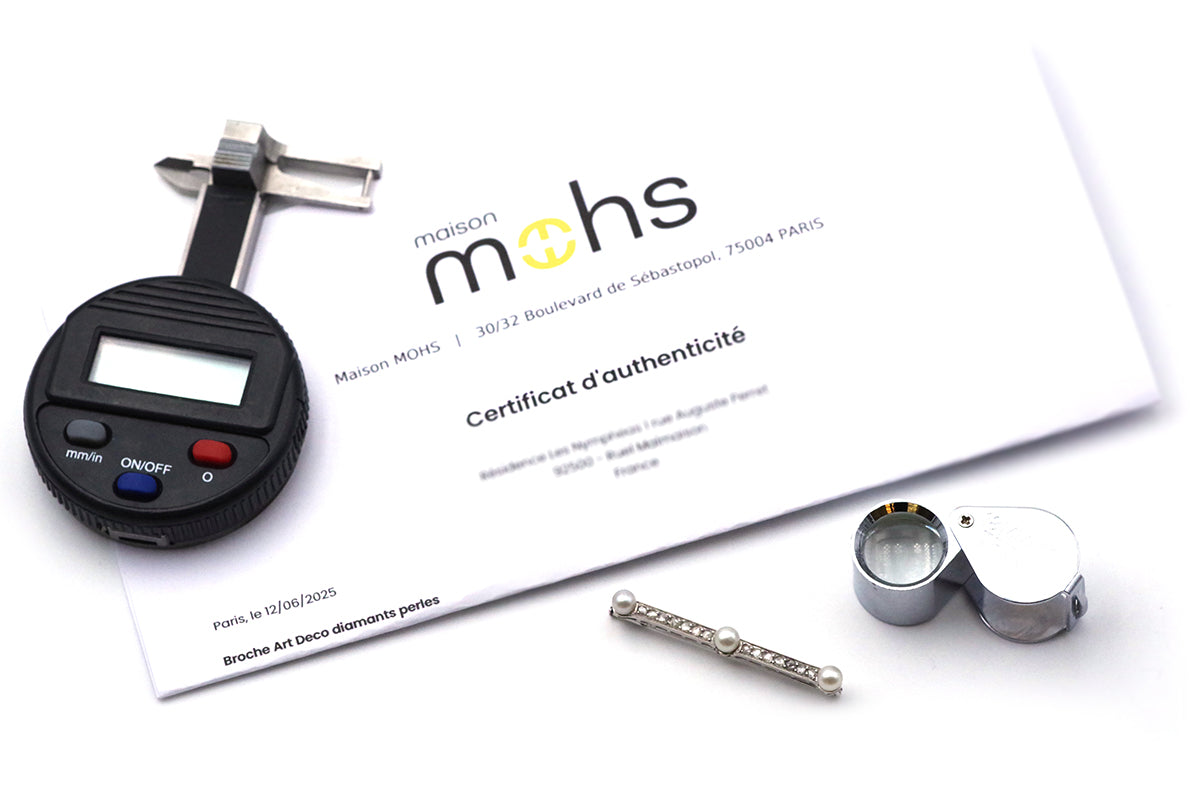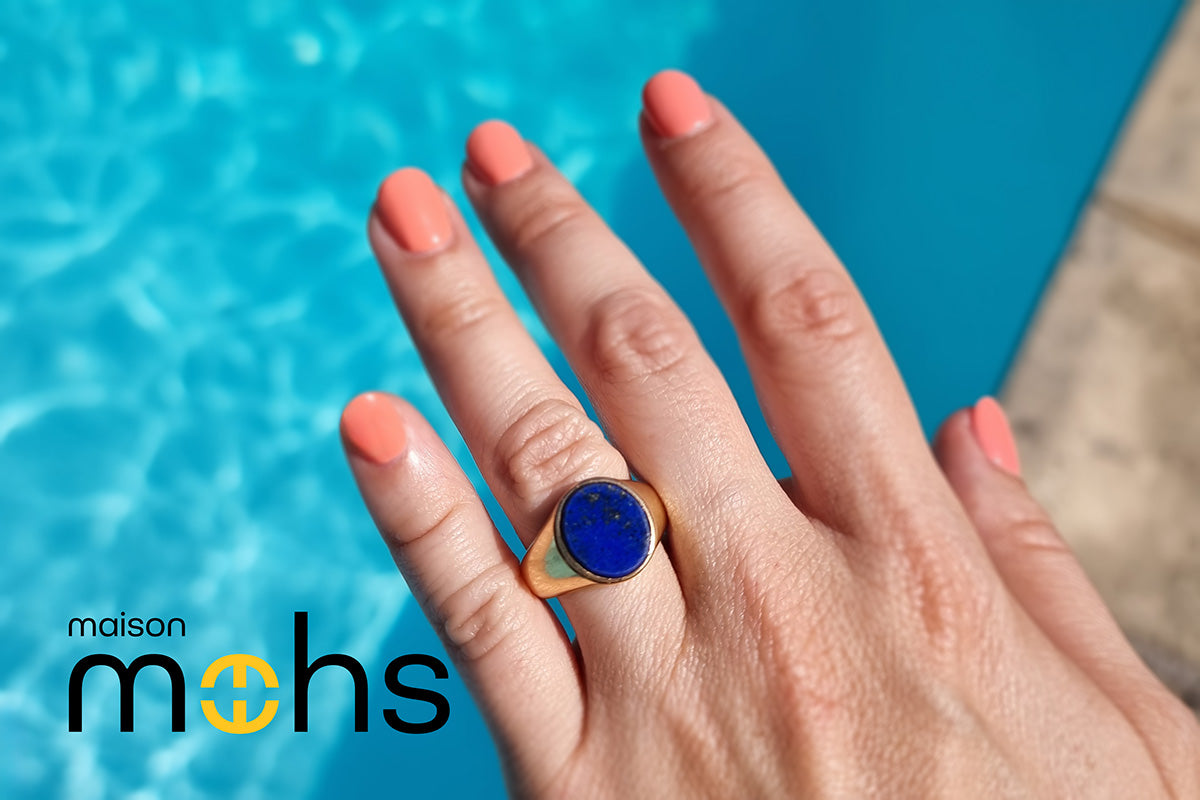
Sapphire, Emerald or Colored Glass? 5 Tips to Identify a Real Gemstone
When you inherit a piece of jewelry or fall in love with an antique ring, one question often arises: Is the stone a real gem or not? Is it a genuine sapphire? A natural emerald? Or just a piece of colored glass? Here are five expert tips to help you start telling the difference between a precious gemstone and an imitation.
Look for Inclusions with a Loupe
Natural gemstones almost always have small inclusions—air bubbles, lines, internal crystals. In contrast, colored glass is usually perfectly smooth and uniform. A 10x magnifying loupe can already reveal some useful clues.

1930s ring, centered with a synthetic sapphire
Mohs House
Check the Sparkle and Reflections
Glass often has a duller shine than real sapphires or emeralds. Sapphires show a vibrant blue glow, while emeralds display a soft yet rich green brilliance. Glass tends to look flatter and more artificial.

Pay Attention to Temperature
Natural gemstones feel cool to the touch, even after a few seconds in your hand. Glass or resin imitations warm up more quickly to body heat.
Examine the Wear of the Stone
Real gemstones like sapphires (9/10 on the Mohs scale) and emeralds (7.5 to 8) are highly resistant to scratches. A heavily scratched or chipped stone may indicate it's glass or a lower-quality imitation.

Consider the Hallmarks and Context
An antique gold piece with proper hallmarks is more likely to contain a real gemstone. On the other hand, flashy stones set in costume metal call for extra caution. The design, setting, and era can offer additional clues.
Synthetic Gems and Imitations: What to Know
Gemstone imitations have existed since ancient times. The Verneuil process, which produces synthetic sapphires, was invented in 1902. Other lab-created methods followed during the 20th century and are still used today. When a stone is synthetic, this must legally be disclosed at the time of sale.
During the Retro period (1945–1960), synthetic stones were widely used in jewelry, especially as global conflicts made it difficult to import natural gemstones. As a result, many pieces from that era feature lab-grown stones—a detail that adds historical context, but also requires transparency.

Lapel clip brooch, synthetic sapphires, Retro period
on sale at Maison Mohs
What Next?
If you'd like a professional appraisal or expert opinion on your piece, feel free to use our dedicated form here: Sell your jewelry .
Only a trained expert can offer a reliable gemstone identification. At Maison Mohs, every stone is inspected by Angéline Chanson, a certified gemologist. When needed, a certificate from the LFG (French Gemological Laboratory) in Paris can be provided.
READ "SYNTHETIC SAPPHIRES, NATURAL SAPPHIRES: WHAT ARE THE DIFFERENCES?








